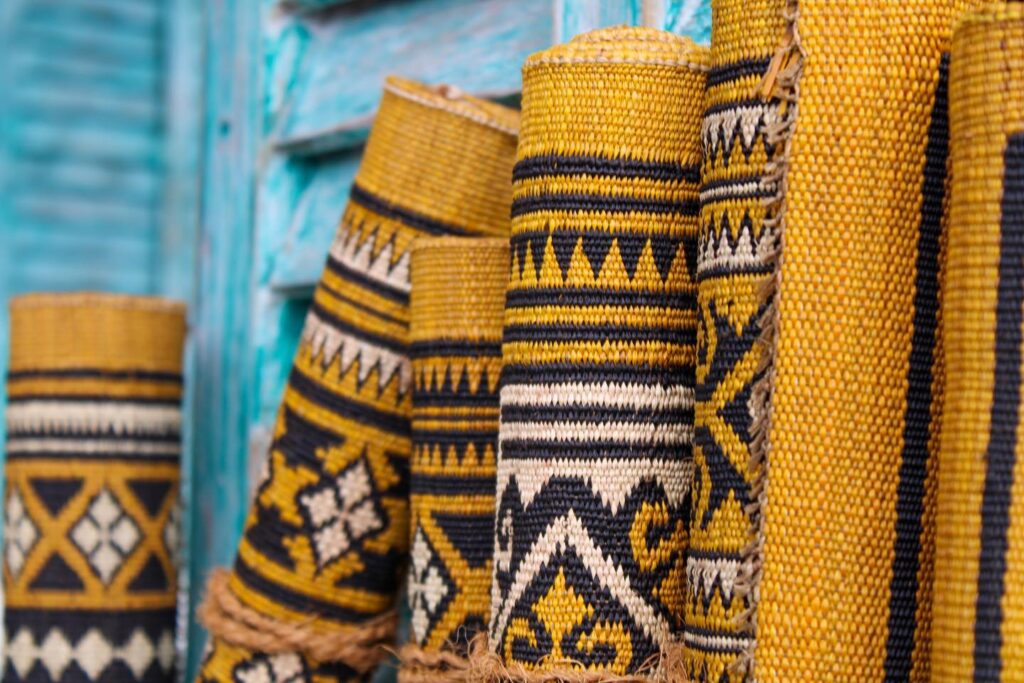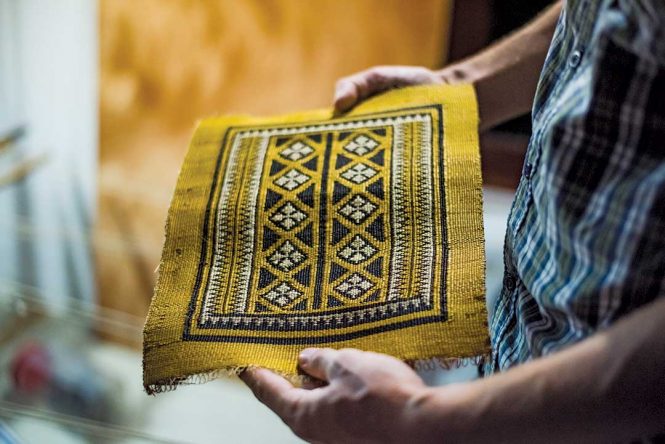
Thun’du kunaa is a hand-woven reed mat. Today these finely woven mats are one of the most popular souvenirs that visitors take home from the Maldives. However, in the past they were held in much higher esteem. Trimmed with gold lace work, the mats were often used as royal gifts made by the Sultans of Maldives to foreign emissaries.
Thun’du kunaa weaving is one of the most prominent Maldivian crafts. The women of the island of Gadhdhoo in Gaafu Dhaalu Atoll are renowned for the craft of thun’du kunaa weaving. Kunaa weavers cultivate their own grass. The reeds are picked and dried and dyed using locally found roots, leaves and bark of trees.
Thun’du kunaa is a hand-woven reed mat. Today these finely woven mats are one of the most popular souvenirs that visitors take home from the Maldives. However, in the past they were held in much higher esteem. Trimmed with gold lace work, the mats were often used as royal gifts made by the Sultans of Maldives to foreign emissaries.

The patterns on these mats are in four colours: natural, yellow, brown and black. Varying processes using leaves, roots and bark of trees are applied to achieve the specific colours. The grass is boiled in a mixture of coconut oil and water with the roots and leaves to achieve the each of the desired colours. Ground turmeric is added to the mix, to dye the reed yellow. To prepare natural colour, the grass is bleached in the sun for a week.
The bark of the sea hibiscus tree is used for making the thread. The mat is woven on a wooden loom, its symmetrical patterns passed on through generations. Small variations are usually introduced by individual weavers.
The mats were also used as sleeping mats, prayer mats and swing seat mats. Different names are given to mats used for different purposes and the patterns on the mats also vary along with it. In addition to being used as souvenirs, today the mats are also widely used as elements in interior decoration at tourist facilities.

